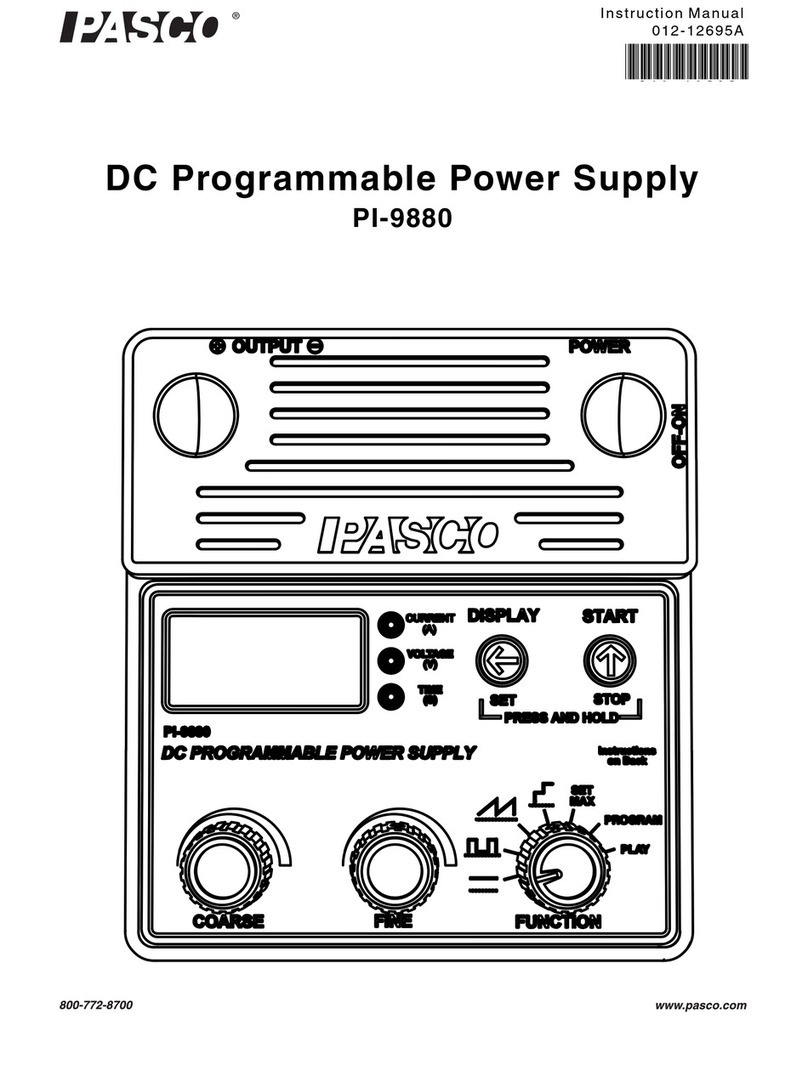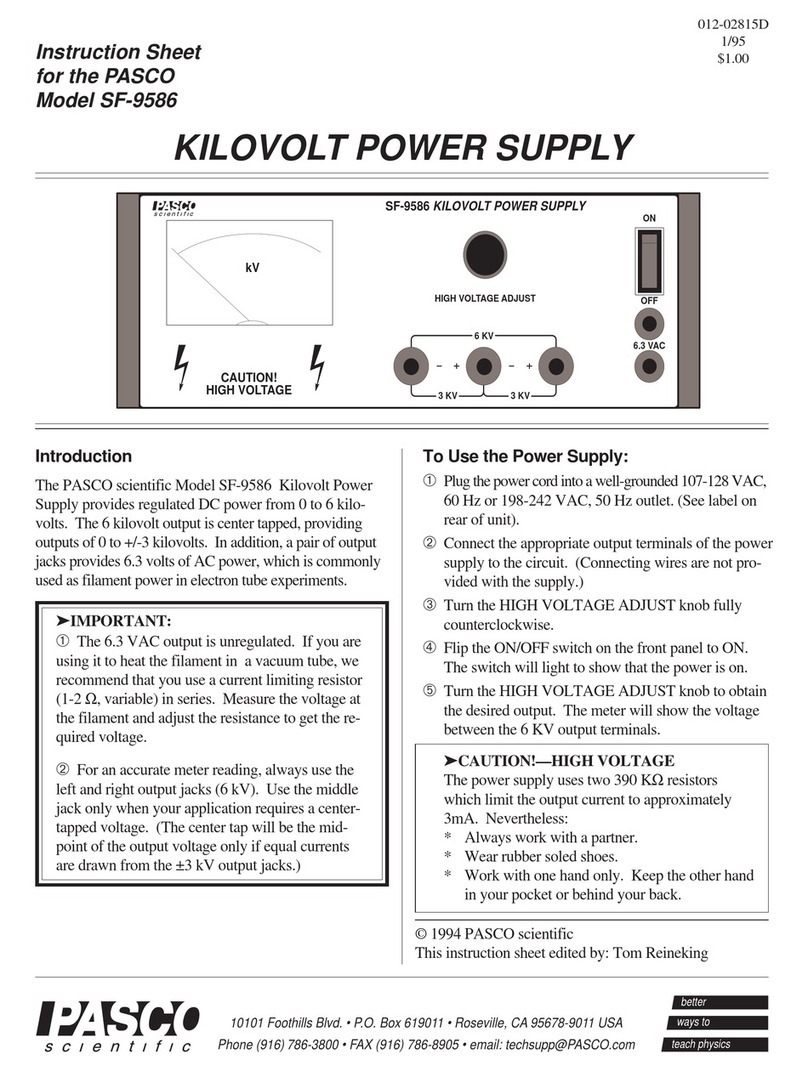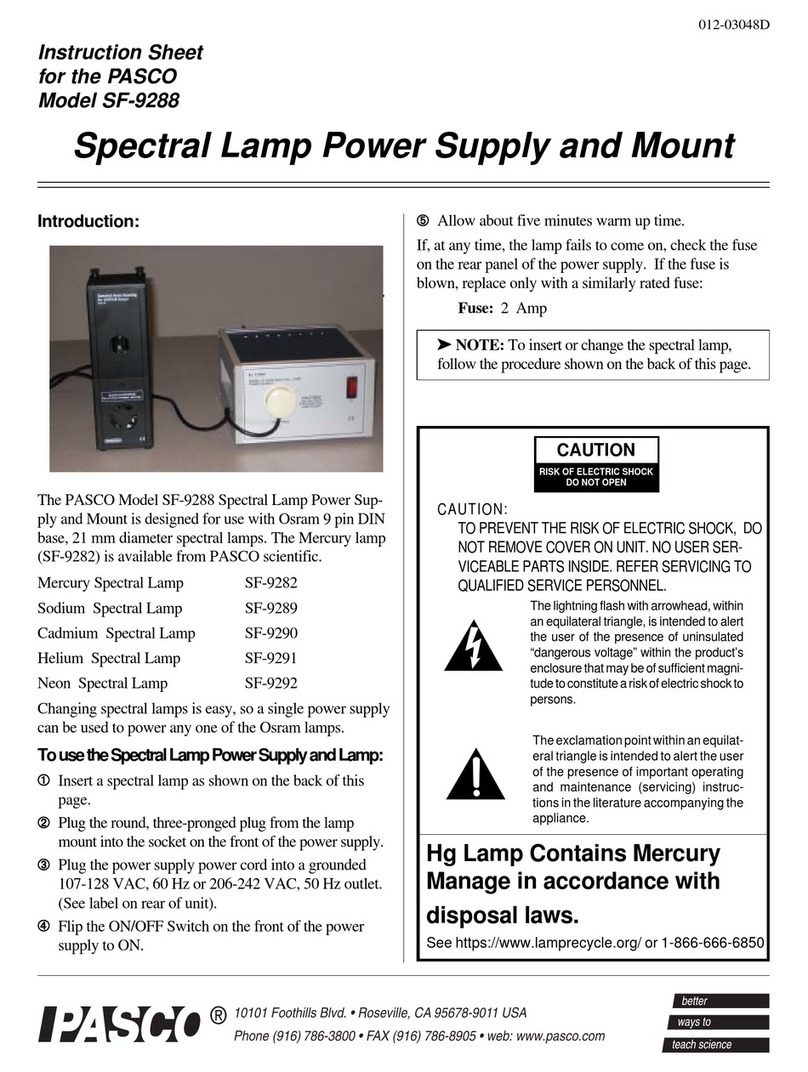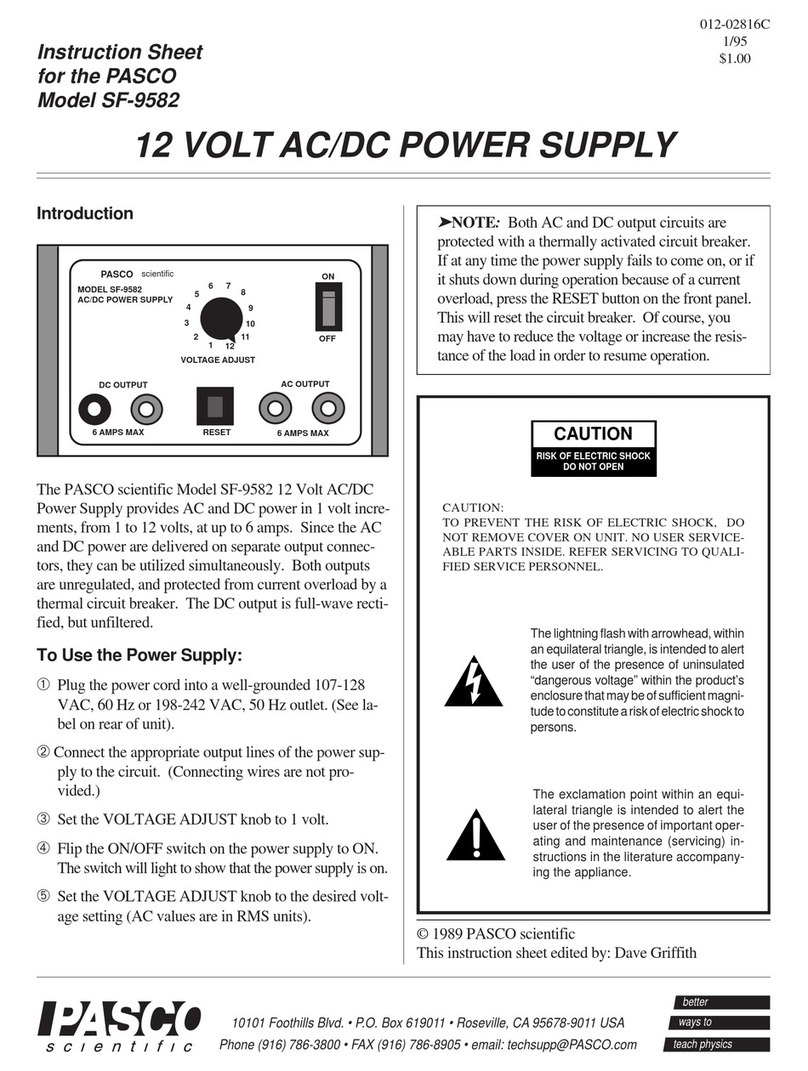
!
DC Power Supply Typical Uses
4
Typical Uses
The Power Supply works well with a variety of electronic circuits, motors, lamps,
heaters, and Peltier devices, including the PASCO apparatus listed below.
Specifications
Model Number Name Comments
ET-8499 Calorimeter Set the Power Supply’s Stair function for a single heat pulse (see
page 26).
EM-8678 Charge/Discharge Circuit Use the Power Supply to charge the circuit’s capacitor or battery. Set the
Power Supply’s maximum voltage to 5 V (see page 20).
ET-8782 Thermoelectric Circuit Set the Power Supply’s maximum voltage to 10 V (see page 20).
ME-8088 Centripetal Force
Apparatus
Use the Power Supply’s ramp function (see page 23) to slowly increase
the rotational speed.
ME-8750 Mechanical Oscillator
Driver
Drive dynamics carts (such as ME-6950) or the Chaos/Driven Harmonic
Accessory (CI-6689A).
ME-8955 Rotational Motor Drive Drive the Rotating Platform (ME-8951) with the Magnetic Levitation
Accessory (EM-8947) or Rotational Acceleration Tank (ME-8957).
TD-8513 Heat Conduction Apparatus Power the apparatus with a positive-offset rectangle wave (see page 22)
or sine wave (the Power Supply’s default custom program, see page 28).
General Specifications
Output Voltage Adjustment 0–18 V
Volt ag e A dju st Res o lut i on 10 mV
Volt ag e A dju s t Accu racy 0.25% of setting or 20 mV, whichever is larger
Current-limit Shutdown Programmable, 0.010–1.050 A
Current Measurement Accuracy 2%
Load Regulation 0.5%
Output Noise 10 mV peak-to-peak typical, 60 mV peak-to-peak at full load
Function-specific Specifications
Function 1: Constant DC Output
(see page 19)
Monitor voltage or current, or cycle with adjustable time
Function 2: Rectangle Wave
(see page 22)
Programmable maximum voltage
Programmable minimum voltage
Programmable period: 0.1–999 s
Programmable duty cycle: 1–99%, Jitter: ±300 µs
Monitor voltage or current
Function 3: Ramp
(see page 23)
Programmable maximum voltage
Programmable minimum voltage
Programmable period: 0.1–999 s
Programmable ramp direction (ascending or descending)
Alternating ramp direction option (triangle wave)
Programmable number of cycles: 1 to 999, or infinite
Monitor voltage or current































